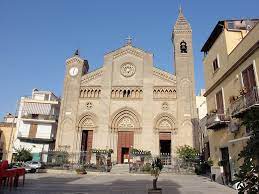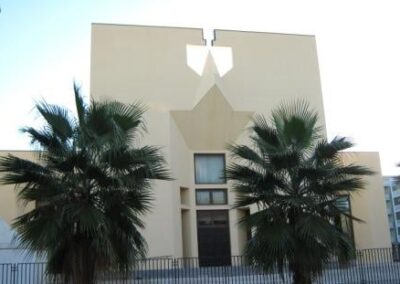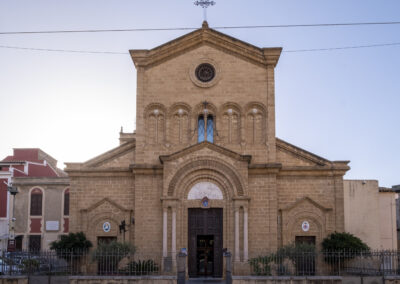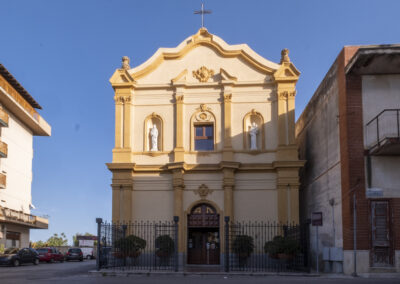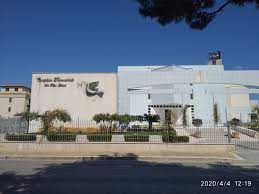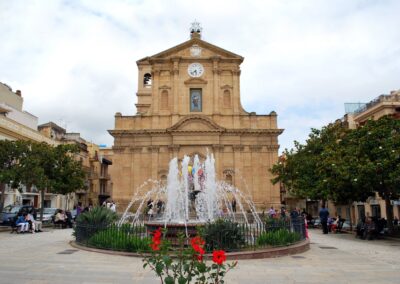Church of the Sepolcro
The foundation stone of the church was laid in 1740 by Prince Don Nicolò Branciforti, who, it is said, threw coins where the columns were erected. Don Giuseppe Toscano of Casalvecchio di Puglia, first chaplain rector of the Church, had it enlarged and enriched with works of art including five valuable slate paintings. Originally the Church consisted of a single nave, around 1866 two more lateral ones were added and around 1884 the roof of the two naves was modified, previously in the shape of a barrel. The vault of the central nave is frescoed with some scenes from the Passion of Christ¸ on the central altar there is a wooden statue of Our Lady of Sorrows, created at the beginning of the 19th century by Rosario Quattrociocchi. In 1914, on a project by Arnò, the construction of the main facade began, in Billiemi marble and in neo-Gothic style, the works were completed after ten years due to the outbreak of the First World War. In 2006, the square in front of the church was rearranged and closed to vehicular traffic.
For information: https://santosepolcro.chiesadipalermo.it/
In depth
The foundation stone of the church was laid in 1740 by Prince Don Nicolò Branciforti, who, it is said, threw coins where the columns were erected. Don Giuseppe Toscano of Casalvecchio di Puglia, first chaplain rector of the Church, had it enlarged and enriched with works of art including five valuable slate paintings depicting: the Holy Family Sant’Onofrio, Santa Rosalia, Sant’Elia and the Deposition of Christ from the Cross. Originally the Church consisted of a single nave, around 1866 two more lateral ones were added and around 1884 the roof of the two naves was modified, previously in the shape of a barrel.
The current high altar donated in 1877 by Don Giuseppe Pittalà; it comes from the Church of San Giacomo in Palermo, now destroyed. The vault of the central nave is frescoed with some scenes from the Passion of Christ¸ on the central altar there is a wooden statue of Our Lady of Sorrows, created at the beginning of the 19th century by Rosario Quattrociocchi.
In 1914, on a project by Arnò, the construction of the main façade began, in Billiemi marble and in neo-Gothic style, the works were completed after ten years due to the outbreak of the First World War. In 2006, the square in front of the church was rearranged and closed to vehicular traffic.

